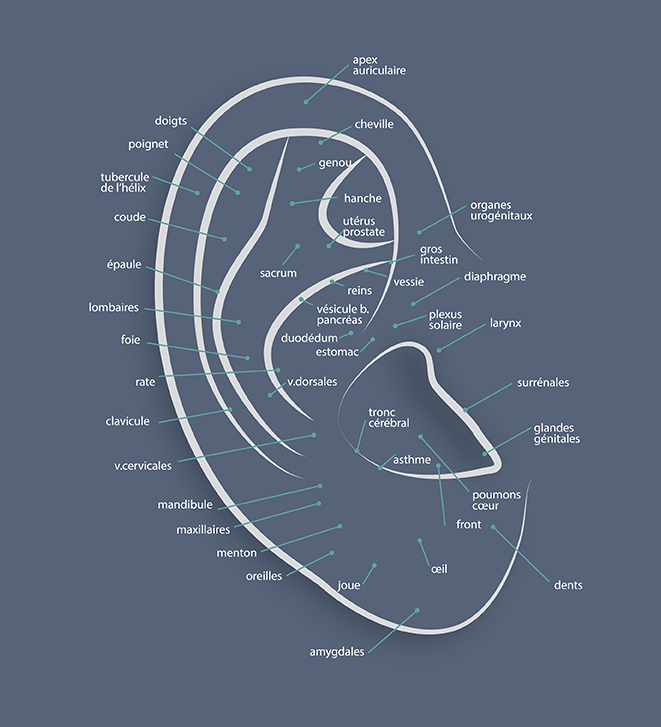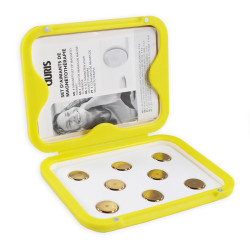Auriculotherapy, or auricular reflexology, intrigues and appeals to more and more people looking for natural solutions to relieve various ailments. Derived from traditional knowledge and perfected by modern medicine, this therapeutic technique is based on the stimulation of specific points located on the auricle.
The origins of auriculotherapy: a revisited ancestral tradition
The idea that the ear can reflect the overall state of health of the human body is not new. In traditional Chinese medicine, there were already references to the use of the ear as a reflex zone. However, modern auriculotherapy was formalised in the 1950s by the French doctor Paul Nogier, often referred to as the ‘father of auriculotherapy’. He drew up a map of the ear, establishing a link between specific auricular zones and bodily organs or functions.
How does auriculotherapy work?
Auriculotherapy is based on a simple principle: the ear is a microcosm of the human body. In other words, it reflects each organ or function in precise zones, rather like the feet in foot reflexology.
Mapping the ear
The auricle is seen as an inverted representation of a foetus. The upper part corresponds to the head and face, while the lower zones relate more to the legs and feet. Specific points are associated with internal organs such as the liver, heart and lungs.
Stimulation tools
The practitioner uses different tools to stimulate these points:
- Fine needles, similar to those used in acupuncture.
- Light electrical stimulation.
- Magnet therapy: by strengthening the stimulated points, this prolongs and amplifies the effectiveness of the treatment. Magnets can be worn in the form of small, discreet devices placed on the ear, providing continuous, non-invasive stimulation.
What are the benefits of auriculotherapy?
This natural method is appreciated for its ability to act on a wide range of physical and emotional disorders. Here are some of the most common benefits:
Pain relief
Auriculotherapy is often used to treat chronic pain such as :
By acting on the reflex zones linked to the joints and muscles, it can reduce the intensity of pain.
Help with addictions
For people who want to stop smoking or reduce their use of medication, this method can be a valuable ally. It acts on the areas linked to addiction and helps to calm compulsive cravings. The Auris Slim and Smoke has been designed with this in mind, combining the action of the magnet with that of pressure exerted on the chosen acupuncture point.
Managing stress and anxiety
Stimulating certain auricular points can have a soothing effect on the nervous system, helping to reduce stress, promote sleep and relieve psychological tension.
Improved circulation
By acting on specific points, auriculotherapy can stimulate blood circulation and help reduce problems associated with poor circulation, such as heavy legs.
Other indications
- Digestive problems.
- Migraines and headaches.
- Hormonal disorders, particularly those associated with the menopause.
However, auriculotherapy is not a substitute for medical treatment. Medical advice is recommended for serious or persistent health problems.
An auriculotherapy session: what can you expect?
During a session, the practitioner begins with an interview to understand your needs. The next step is to:
- 1. He or she examines your ear using a detector or simply by palpating the sensitive areas.
- 2. Reflex points are stimulated using needles, seeds or an electrical device.
- 3. Once the points have been activated, you may feel an immediate sensation of relaxation or gradual relief over the following hours or days.
Auriculotherapy, a promising approach
Natural, effective and accessible, auriculotherapy offers a suitable response to a wide range of needs. Whether it's to relieve chronic pain, manage stress or support withdrawal, it offers a gentle, reassuring alternative. Combine it with complementary techniques such as magnetotherapy to maximise its benefits and improve your quality of life.




